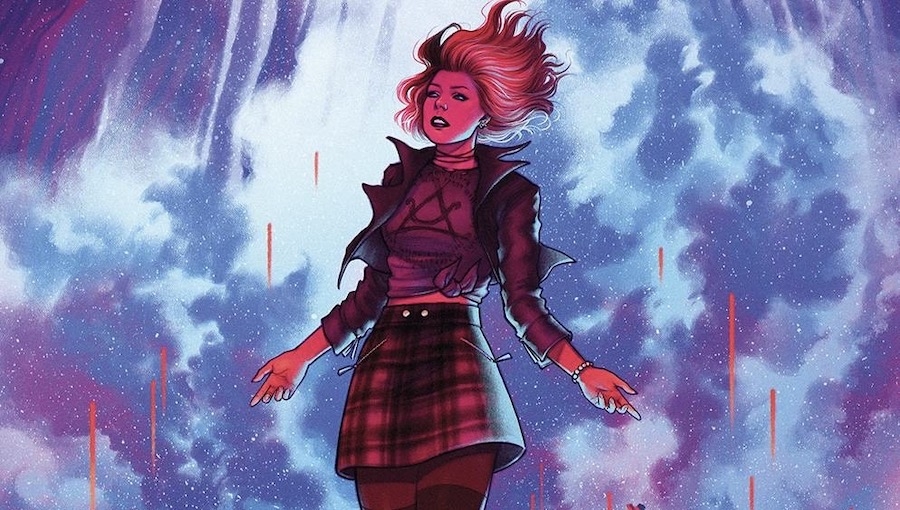Quick recap: Unable to bear heading straight back to Sunnydale, Willow decided to take a detour of sorts, landing her in a quaint li’l village. Despite all appearances to the contrary, Abhainn seems to have some secrets, possibly of the dark variety.
Finding herself in Abhainn, Willow revels in the comforts of being around people who seem to get her. The question is, is Abhainn really too good to be true?
After a really dynamic first issue, Mariko Tamaki takes her time setting up Willow’s feelings about Abhainn here, balancing Willow’s uneasiness with the place but also wanting to give in to the sense of belonging she feels. After all, if something feels so right, can it actually be wrong? Here’s why #StoriesMatter to me, especially from the viewpoint of a marginalized community. Growing up in a country where being LGBTQ was more incomprehensible than necessarily hated (Hello, Malaysia!), I sought harder than ever to find my “tribe,” the people whom I thought would understand me. I had the internet, which then told me that I also wasn’t right… (It was the early ‘00s.) Could I really be a nerd, who was a feminist, an academic, and an introvert at the same time? Even today, there are many “safe spaces” that are only for those that parrot the same beliefs, but what about those of us that fall into the even more marginal spaces? Willow has always been an important character to me, because she found – and still finds – her place in between spaces. Willow bridged the gap for so many, because she was able to be a whole person, not just a trope. Perhaps, more so than ever, in our increasingly divided societies, it seems important to constantly evaluate our positions to stay true to ourselves instead of simply falling into the echo chamber trap.
Natacha Bustos’ artwork is excellent in this issue. She takes use through Willow’s journey, from the surrealist dreamspaces through Willow’s initial misgivings about Albainn to her final acceptance and reveling in it. It is truly a joy to see Willow in her element, but perhaps more than anything else, it’s absolutely wonderful seeing Willow find her bliss, even though we know that it’s probably not going to last. Eleonora Bruni’s colorwork amplifies this journey, from the calmness early on until the joyous blaze of the final pages. Jodi Wynne’s lettering seems to effortlessly capture Willow’s cadence, allowing the reader to “hear” her voice, especially her inner monologues, albeit with a slightly postmodern spin.
Overall, Willow #2 is much more of an internal journey than an action-oriented one. It’s becoming pretty obvious than the sense of complacency that Willow feels in this place will probably be a struggle soon.
Creative Team: Mariko Tamaki(writer), Natacha Bustos (artist), Eleonora Bruni (colorist), Jodi Wynne (letterer)
Publisher: BOOM! Studios
Click here to purchase.

